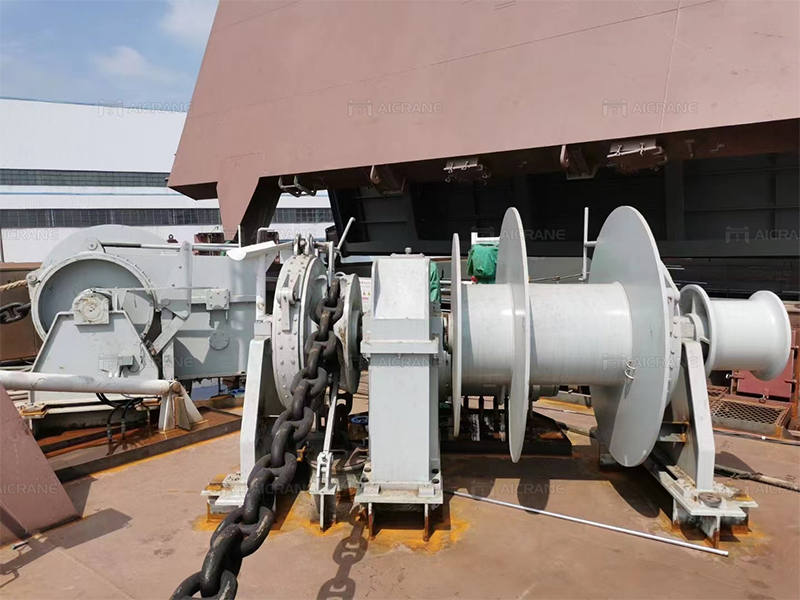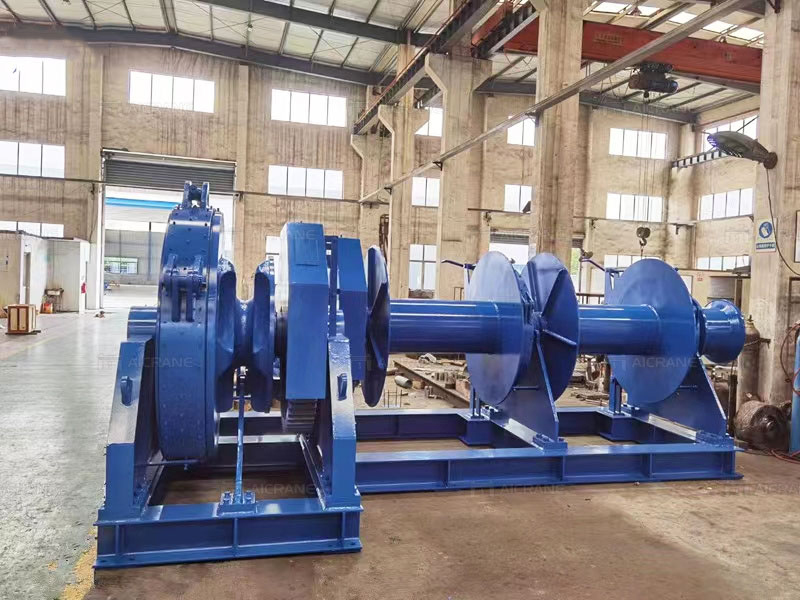In the intricate world of maritime operations, the reliability and functionality of equipment play a pivotal role in ensuring the safety of vessels and their crews. Among the crucial components on a ship, anchor mooring winches stand out as essential for secure anchoring and navigation. To uphold the highest standards of safety at sea, it is imperative to establish a routine inspection and maintenance schedule for these winches. In this article, we will explore the significance of regular inspections and maintenance for anchor mooring winches, emphasizing the critical role they play in the maritime industry.

Understanding the Importance of Anchor Mooring Winches:
Anchor mooring winches are mechanical devices responsible for deploying, retrieving, and securing anchors. They play a pivotal role in ensuring a ship’s stability during anchoring and contribute significantly to the overall safety and efficiency of maritime operations. These anchor mooring winches are subjected to harsh marine conditions, exposing them to wear and tear over time. Therefore, a comprehensive inspection and maintenance regimen is crucial to guarantee their optimal performance.
Factors Influencing Inspection Frequency:
The frequency of anchor mooring winch inspections should be determined by a combination of factors, including the type of winch, the vessel’s operational profile, and prevailing environmental conditions. Ships engaged in frequent anchoring and those navigating through challenging weather conditions may require more frequent inspections. Additionally, the type of winch, whether hydraulic, electric, or manual, will influence the maintenance requirements.
Manufacturer Guidelines and Regulatory Compliance:
Manufacturers provide specific guidelines regarding the inspection and maintenance schedules for anchor mooring winches. Adhering to these guidelines is essential to ensure compliance with industry standards and regulations. Regular checks as per manufacturer recommendations not only enhance the longevity of the equipment but also contribute to the overall safety of the vessel.
Preventive Maintenance Practices:
Implementing a proactive maintenance approach is key to preventing unexpected breakdowns and ensuring the seamless operation of anchor mooring winches. Regular lubrication, inspection of cables and chains, and checking for signs of corrosion are integral parts of preventive maintenance. Addressing minor issues promptly can prevent them from escalating into major problems that could compromise the safety of the vessel.
Common Issues and Signs of Wear:
Anchor mooring winches are exposed to harsh conditions, making them susceptible to various issues. Signs of wear and tear include unusual sounds during operation, decreased performance, visible corrosion, and leaks in hydraulic systems. Regular inspections can identify these issues early, allowing for timely repairs and replacements, thereby minimizing downtime and ensuring the safety of maritime operations.

Training and Competency of Personnel:
The effectiveness of inspections and maintenance activities heavily relies on the competence of the personnel involved. Crew members responsible for these tasks should undergo proper training to understand the intricacies of mooring winches and associated safety protocols. Additionally, establishing a culture of safety awareness onboard encourages the reporting of potential issues, fostering a proactive approach to maintenance.
The Role of Technology in Maintenance:
Embracing technological advancements can significantly enhance the efficiency of anchor mooring winch inspections. Remote monitoring systems, sensors, and condition-based monitoring technologies allow for real-time tracking of equipment health. Integrating these technologies into the maintenance routine can provide valuable data, enabling predictive maintenance strategies and minimizing the risk of unforeseen failures.
Cost-Effective Strategies:
While regular inspections and maintenance incur costs, they are an investment in the long-term reliability and safety of anchor mooring winches. Adopting a cost-effective approach involves balancing scheduled maintenance with reactive repairs, prioritizing critical components, and leveraging technology to optimize resource allocation.
Conclusion:
In conclusion, anchor mooring winches are integral to the safety and functionality of maritime operations. Establishing a robust inspection and maintenance schedule is not merely a regulatory requirement but a proactive measure to ensure the well-being of vessels, crews, and cargo. The frequency of inspections, adherence to manufacturer guidelines, and the integration of technology all contribute to a comprehensive approach that enhances the reliability and longevity of anchor mooring winches. By prioritizing safety through regular maintenance, the maritime industry can navigate the challenges of the open sea with confidence and resilience. Interested in winches? Click here https://winchmachines.com/